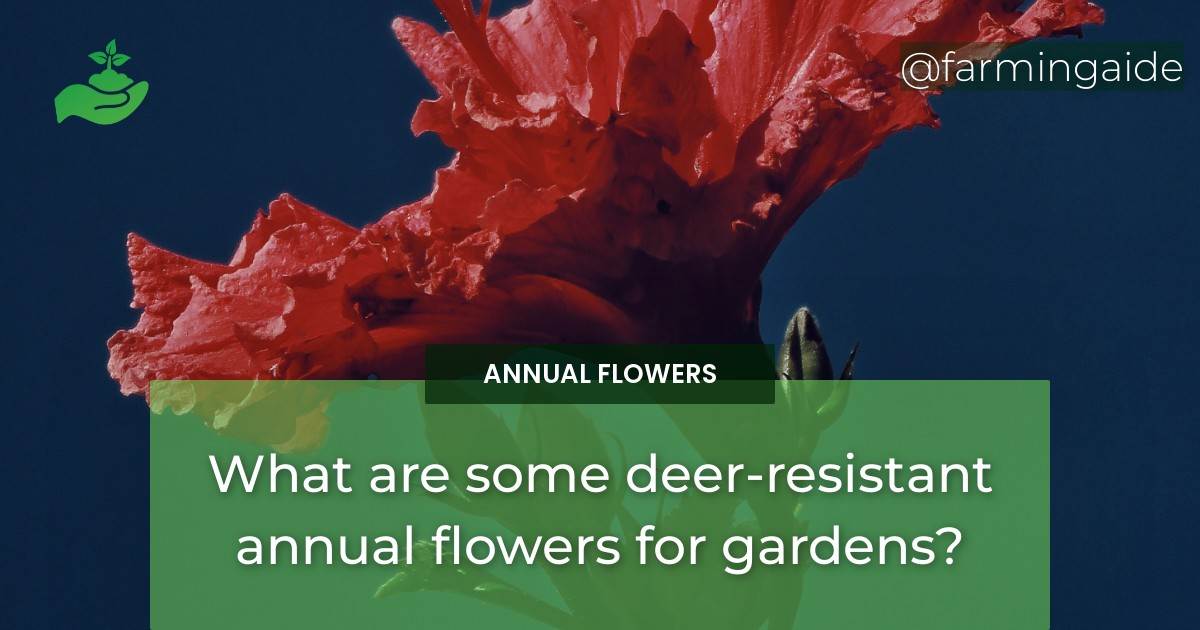Deer browsing on garden plants can be a frustrating experience for gardeners. Planting deer-resistant annual flowers can help keep deer away while adding color and interest to your garden. These flowers possess certain characteristics that make them unappealing to deer, including strong aroma, bitter taste, prickly or fuzzy texture, and unappealing appearance. In this article, we will explore some of the best deer-resistant annual flowers for gardens and tips for planting them effectively.
Table of Contents
Characteristics of Deer-Resistant Annual Flowers
Strong Aroma
Flowers with a strong aroma, such as marigolds and snapdragons, can be effective in keeping deer away. Their scent can be overwhelming to deer and discourage them from eating the plants.
Bitter Taste
Deer tend to avoid plants with a bitter taste. Ageratums and nicotianas contain compounds that give them a bitter taste, making them unappealing to deer.
Toxicity
Some annual flowers are toxic to deer, such as petunias and cosmos. While not harmful to humans, these flowers can cause digestive problems for deer if ingested.
Prickly or Fuzzy Texture
Flowers with a prickly or fuzzy texture, such as zinnias, can be difficult for deer to eat. The texture can be uncomfortable for their mouths and discourage them from eating the plants.
Unappealing Appearance
Deer tend to avoid plants that do not look appetizing. Flowers with an unappealing appearance, such as marigolds and snapdragons, can be effective in keeping deer away.
Examples of Deer-Resistant Annual Flowers
Marigolds
- Strong aroma
- Unappealing appearance
Zinnias
- Prickly texture
- Unappealing appearance
Snapdragons
- Strong aroma
- Unappealing appearance
Ageratums
- Bitter taste
- Unappealing appearance
Nicotianas
- Bitter taste
- Unappealing appearance
Petunias
- Toxicity
- Unappealing appearance
Cosmos
- Toxicity
- Unappealing appearance
Tips for Planting Deer-Resistant Annual Flowers
Plant in Groups
Planting deer-resistant annual flowers in groups can increase their effectiveness in keeping deer away. Deer are less likely to eat plants that are surrounded by other unappetizing plants.
Use Companion Planting
Companion planting can help deter deer by creating a barrier of unappetizing plants around your garden. Planting herbs like rosemary, thyme, and lavender can also help mask the scent of your garden.
Rotate Planting Locations
Deer can become accustomed to the plants in your garden over time. Rotating your planting locations and changing your garden layout can help keep deer guessing and deter them from eating your plants.
Create Physical Barriers
Physical barriers, such as fencing or netting, can help keep deer out of your garden. Be sure to make the barrier tall enough to prevent deer from jumping over it.
Use Deer Repellents
There are several deer repellents available on the market, including sprays, granules, and electronic devices. These products can help keep deer away from your garden, but be sure to follow the instructions carefully and reapply as needed.
Are Heat-Tolerant Annual Flowers also Deer-Resistant for Gardens?
While some heattolerant annual flowers can withstand sizzling summer temperatures, their resistance to nibbling deer varies. Gardeners must research individual species, as heat tolerance doesn’t guarantee deer-resistance. Yet, certain robust annuals offer the best of both worlds, combining resilience with less palatability to wildlife.
Conclusion
Planting deer-resistant annual flowers in your garden can help keep deer away while adding color and interest to your outdoor space. By understanding the characteristics of these flowers and following the tips for planting them effectively, you can create a garden that is both beautiful and deer-resistant.


